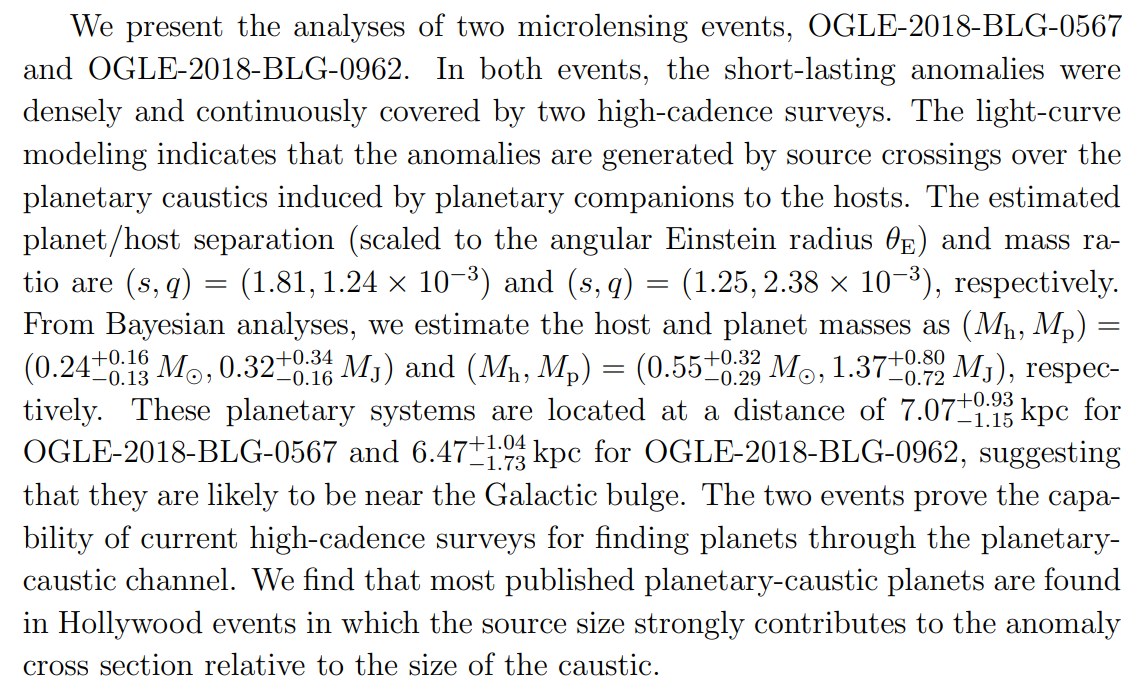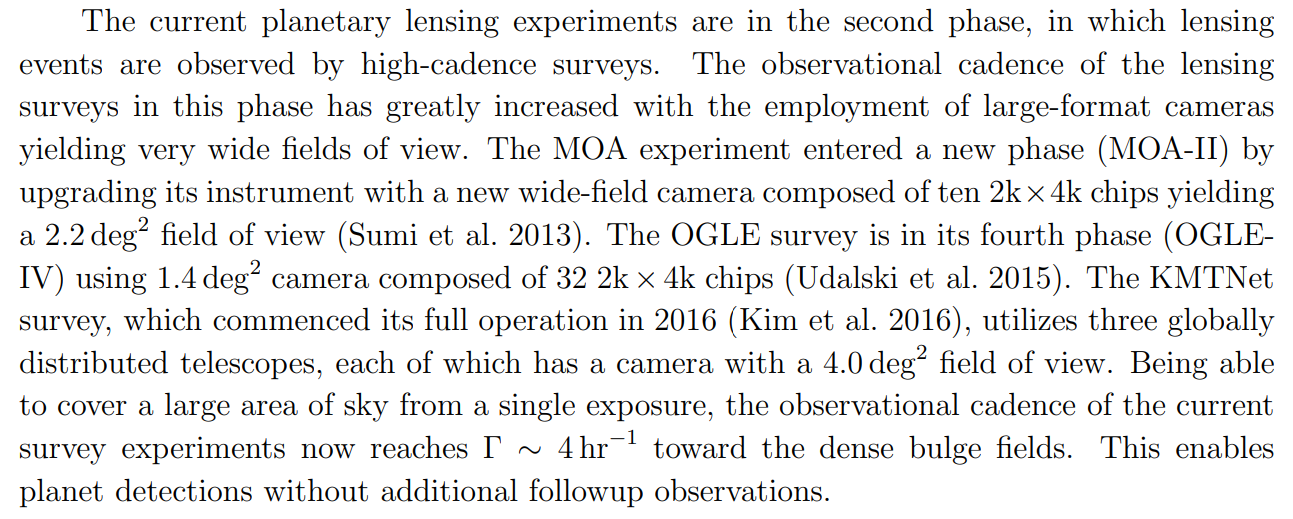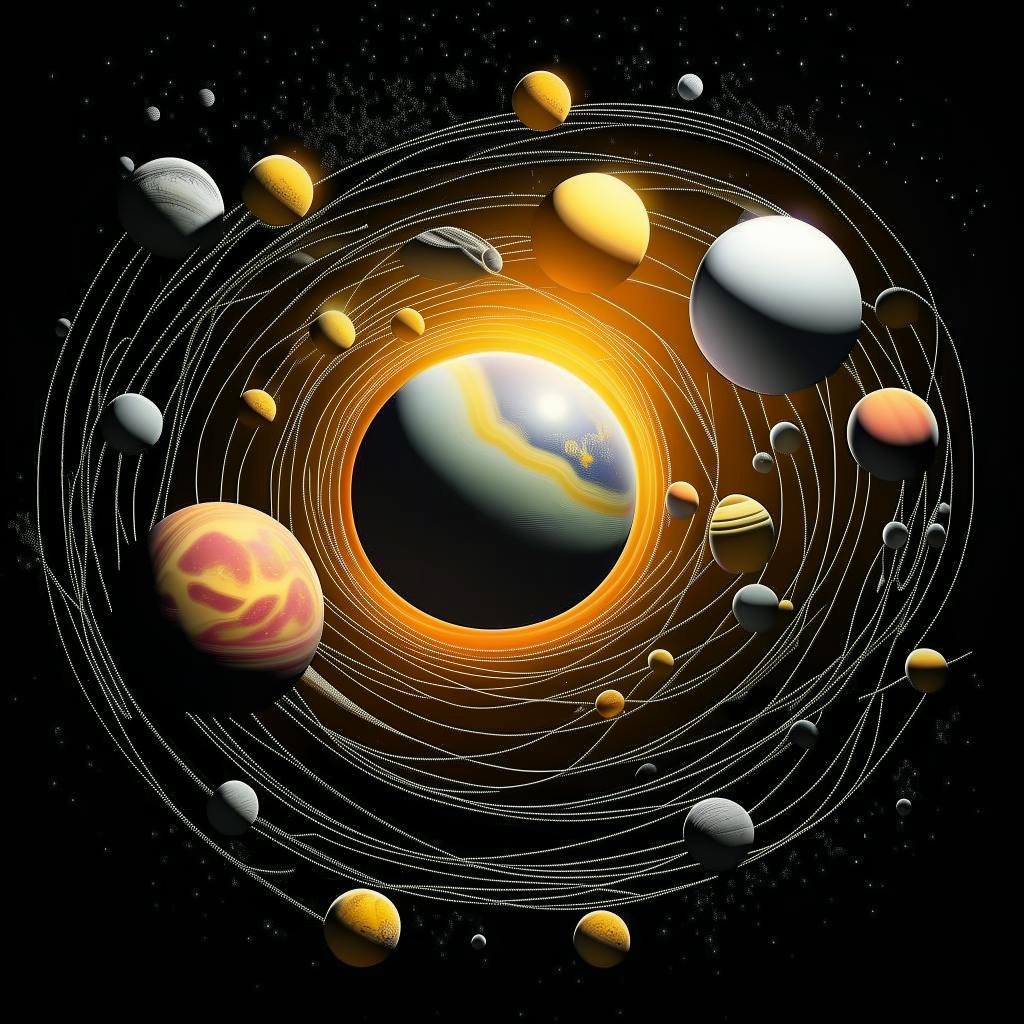Authors:
(1) Youn Kil Jung, Korea Astronomy and Space Science Institute, University of Science and Technology, and The KMTNet Collaboration;
(2) Cheongho Han, Department of Physics, Chungbuk National University and The KMTNet Collaboration;
(3) Andrzej Udalski, Warsaw University Observatory and The OGLE Collaboration;
(4) Andrew Gould, Korea Astronomy and Space Science Institute, Department of Astronomy, Ohio State University, Max-Planck-Institute for Astronomy and The KMTNet Collaboration;
(5) Jennifer C. Yee, Center for Astrophysics | Harvard & Smithsonian and The KMTNet Collaboration;
(6) Michael D. Albrow, University of Canterbury, Department of Physics and Astronomy;
(7) Sun-Ju Chung, Korea Astronomy and Space Science Institute and University of Science and Technology;
(8) Kyu-Ha Hwang, Korea Astronomy and Space Science Institute;
(9) Yoon-Hyun Ryu, Korea Astronomy and Space Science Institute;
(10) In-Gu Shin, Korea Astronomy and Space Science Institute;
(11) Yossi Shvartzvald, Department of Particle Physics and Astrophysics, Weizmann Institute of Science;
(12) Wei Zhu, Canadian Institute for Theoretical Astrophysics, University of Toronto;
(13) Weicheng Zang, Department of Astronomy, Tsinghua University;
(14) Sang-Mok Cha, Korea Astronomy and Space Science Institute and 2School of Space Research, Kyung Hee University;
(15) Dong-Jin Kim, Korea Astronomy and Space Science Institute;
(16) Hyoun-Woo Kim, Korea Astronomy and Space Science Institute;
(17) Seung-Lee Kim, Korea Astronomy and Space Science Institute and University of Science and Technology;
(18) Chung-Uk Lee, Korea Astronomy and Space Science Institute and University of Science and Technology;
(19) Dong-Joo Lee, Korea Astronomy and Space Science Institute;
(20) Yongseok Lee, Korea Astronomy and Space Science Institute and School of Space Research, Kyung Hee University;
(21) Byeong-Gon Park, Korea Astronomy and Space Science Institute and University of Science and Technology;
(22) Richard W. Pogge, Department of Astronomy, Ohio State University;
(23) Przemek Mroz, Warsaw University Observatory and Division of Physics, Mathematics, and Astronomy, California Institute of Technology;
(24) Michal K. Szymanski, Warsaw University Observatory;
(25) Jan Skowron, Warsaw University Observatory;
(26) Radek Poleski, Warsaw University Observatory and Department of Astronomy, Ohio State University;
(27) Igor Soszynski, Warsaw University Observatory;
(28) Pawel Pietrukowicz, Warsaw University Observatory;
(29) Szymon Kozlowski, Warsaw University Observatory;
(30) Krzystof Ulaczyk, Department of Physics, University of Warwick, Gibbet;
(31) Krzysztof A. Rybicki, Warsaw University Observatory;
(32) Patryk Iwanek, Warsaw University Observatory;
(33) Marcin Wrona, Warsaw University Observatory.
Table of Links
- Abstract and Intro
- Observation
- Light Curve Analysis
- Physical Parameters
- Microlensing Planets in the (log s, log q) plane
- Summary and Conclusions
- References
ABSTRACT

Subject headings: gravitational lensing: micro–planetary systems
1. Introduction
The signature of a microlening planet is almost always a short-lasting anomaly in the smooth and symmetric lensing light curve produced by the host of the planet. In principle, the signature can appear at any position of the lensing light curve (Gaudi 2012). In reality, however, the signatures of planets detected in the earlier phase of lensing experiments appeared mainly near the peak of lensing light curves.
The bias toward central anomalies is mostly attributed to the limitation of early lensing surveys. With a roughly 1 day cadence of the first-generation survey experiments, e.g., the MACHO (Alcock et al. 1995), OGLE-I (Udalski et al. 1992), MOA-I (Bond et al. 2001) surveys, it was difficult to detect planetary signals lasting of order 1 day or less by the survey experiments. To meet the cadence requirement for planet detections, Gould & Loeb (1992) proposed an observational mode, in which wide-field surveys with a low cadence monitor a large area of sky mainly to detect lensing events, and followup experiments conduct high cadence observations for a small number of lensing events detected by the surveys using a network of multiple narrow-field telescopes. However, this mode of observations had the drawback that only a handful of lensing events could be monitored by follow up observations. Combined with the low probability of planetary perturbations, this implied a low planet detection rate for this phase of the experiments. In fact, for the first several years, there were no securely detected planets using this mode, although there was one tentative detection in the event MACHO 98-BLG-35 (Rhie et al. 2000).
The first three microlensing detections were found using the survey+followup strategy. In the first event, OGLE 2003-BLG-235/MOA 2003-BLG-53 (Bond et al. 2004), the planet was found by the surveys, but the MOA survey carried out additional followup observations in response to the planetary anomaly. The next two planets, OGLE-2005-BLG-071Lb (Udalski et al. 2005) and OGLE-2005-BLG-390Lb (Beaulieu et al. 2006), were both found through extensive followup observations of known microlensing events that were initiated before the planetary anomaly began. The discovery of OGLE-2005-BLG-071Lb provided a practical lesson in the value of high-magnification events (Griest & Safizadeh 1998) for detecting planets through followup observations.
In the following years, the planet detection rate using the survey+followup mode was substantially increased by focusing on events with very high magnifications. Several factors contributed to the increase of the detection rate. First, the planet detection efficiency for high-magnification events is high. This is because a planet located in the lensing zone of its host always induces a small central caustic near the position of the host, and the trajectory of a high-magnification event passes close to the central caustic. This yields a high probability that a planet will produce a perturbation and also confine that perturbation to a short duration of time while the event is highly magnified, not throughout the whole event. As a result, the time of the planetary signal, i.e., the peak of the light curve, can be predicted in advance and enable one to efficiently use resources for followup observations. By contrast, predicting the time of a planetary signal through other channels is difficult. Finally, highly magnified source stars are bright enough to be observed with small-aperture telescopes, down to sub-meter amateur-class telescopes, and this enables one to maximize available telescopes for followup observations, e.g., OGLE-2005-BLG-071 (Udalski et al. 2005; Dong et al. 2009). Thus, the planets detected from the survey+followup experiments were detected mainly through the high-magnification channel, and this led to the bias toward central caustic perturbations.

With the operation of the high-cadence surveys, the detection rate of planets is rapidly increasing. One important reason for the rapid increase of the detection rate is that planets can be detected not only through the central-caustic channel but also through the additional planetary-caustic channel. Planets are detected through the planetary-caustic channel as anomalies produced by the source’s approach close to the “planetary caustic”, which denotes one of the two sets of planet-induced caustics lying away from the host. The planetary caustic lies at a position with a separation from the host of s − 1/s, and thus planetary signals produced by this caustic can appear at any part of the lensing light curve depending on the planet-host separation s (normalized to the angular Einstein radius θE). The planetary caustic is substantially larger than the central caustic, and thus the probability of a planetary perturbation is higher. Another importance of detecting planets through the planetary-caustic channel is that interpreting the planetary signal is usually not subject to the close-wide degeneracy (Griest & Safizadeh 1998; Dominik 1999), which causes ambiguity in estimating the planet-host separations for most planets detected through the central-caustic channel.
In this paper, we present the analysis of two planetary microlensing events OGLE2018-BLG-0567 and OGLE-2018-BLG-0962, for which planets are both detected through a planetary-caustic channel. For both events, the signatures of the planets were densely and continuously covered by two high-cadence lensing surveys, and this leads us to unambiguously interpret the planetary signals.
This paper is available on arxiv under CC0 1.0 DEED license.
